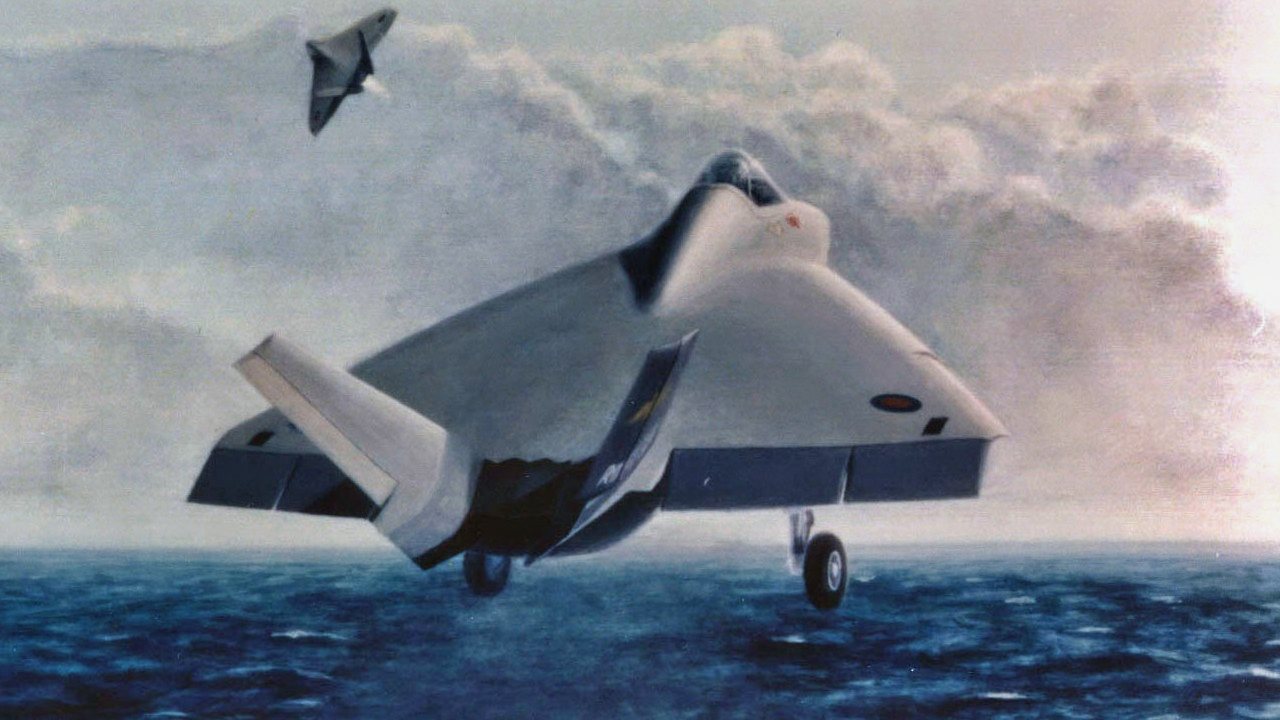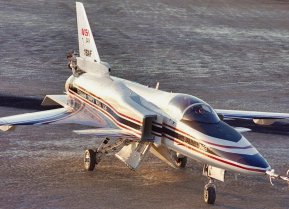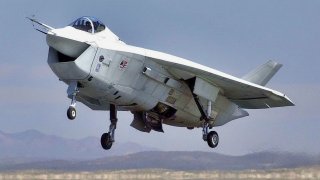Boeing X-32: This Could Be Flying for the Air Force Instead of the F-35
The Boeing X-32 was developed as a concept demonstrator aircraft for the Joint Strike Fighter competition after it merged with the Common Affordable Lightweight Fighter (CALF) program
Earlier this month, the National Museum of the United States Air Force at Wright-Patterson Air Force Base (AFB), Dayton, Ohio, shared photos of the ongoing restoration efforts of its Boeing X-32A.
The aircraft was seen receiving its final paint coating, while the institution announced that next step would be the application of decals.
Several military modelers soon joked whether they would be "water slide decals" and that it would require mighty big tweezers for their application.
The museum received the aircraft in 2005, and it could be sometime next year that it will be put on public display – a welcome addition to its already beyond-impressive aircraft collection. It is expected that the X-32A will be placed in the Maj. Gen. Albert Boyd and Maj. Gen. Fred Ascani Research and Development Gallery, which is home to such unique aircraft as the sole surviving North American XB-70A Valkyrie, one of the two existing Avro Canada VZ-9AV Avrocars, and the second prototype Lockheed YF-12A Mach 3 interceptor.
X-32: The F-35's Challenger
The Boeing X-32 was developed as a concept demonstrator aircraft for the Joint Strike Fighter competition after it merged with the Common Affordable Lightweight Fighter (CALF) program. It lost to the Lockheed Martin X-35 demonstrator, which was further developed into the Lockheed Martin F-35 Lightning II.
The X-32 offered a sleek design with sharp angles that worked seamlessly into smooth contours that were meant to utilize all the known concepts of "stealth" flight and radar evasion. The cockpit was set to the front of the fuselage behind the aircraft's nose assembling, while the delta-shaped wings were high-mounted, which negated the use of conventional tailplanes while the empennage sported a pair of outward canted vertical tail fins.
The aircraft was built around its one-piece carbon-fiber delta wing that was meant to serve as the foundation for the multiple X-32 variant, while Boeing devised a simple direct-lift thrust vectoring system for the fighter. It was meant to be easily swapped out for the Short Take Off and Vertical Landing (STOVL) thrust vectoring nozzles.
Some aviation experts have suggested the X-32 was hardly an attractive aircraft.
"Visually speaking, the highlight of the X-32 was its unusual engine intake, which sat centered below the jet's nose. The engine intake was oddly shaped, gaping and angular. The fuselage was not much more attractive – it featured a bloated aesthetic, one that sagged beneath a delta wing configuration. Granted, Boeing’s primary objective when designing the X-32 was not to create an attractive airplane. Still, the X-32 rolled off the assembly line as a uniquely ugly bird," wrote Harrison Kass for The National Interest.
The single-seat X-32A and X-32B

prototype aircraft had a maximum range of between 600 and 850 nautical miles (1,111 to 1,574 kilometers). The aircraft were each powered by a single Pratt & Whitney JSF-119-PW-614 turbofan, which produced more than 42,000 pounds of thrust to lift the concept demonstrator into the air.
The X-32’s internal bay loadout supported six AMRAAM air-to-air missiles or a combination of up to two air-to-air missiles and two bombs.
Taking Flight
The Boeing prototype X-32A made its maiden flight in September 2000, the first of a total of 66 flights during its first four months of testing, when it further demonstrated its handling qualities for inflight refueling, weapons bay operations, and supersonic flight. The X-32B, the second of the two prototypes built, also took part in around 78 flight tests – which highlighted its STOVL capabilities.
Those tests were not all that streamlined, and as Kass further noted, "A team of mechanics had to reconfigure the aircraft between STOVL and supersonic modes, in between tests, on the ground. Lockheed's entry, on the other hand, could reconfigure between STOVL and supersonic modes mid-flight."
During the tests, Boeing also insisted that these features would be unified with the serial F-32, but its rival X-35 demonstrator model was already capable of doing both.
It was in October 2001 that the Department of Defense (DoD) announced that Lockheed Martin had won the JSF competition – and that was seen as a serious blow for Boeing. However, the aerospace giant did incorporate some of the technologies developed from the X-32 program into its F/A-18E/F Super Hornet and the X-45a Unmanned Combat Air Vehicle (UCAV).
X-32: Restoration Required
The condition of the two prototypes was described as rough – with the X-32B being left outside at the end of the JSF competition. Its restoration has been underway at the National Museum of the United States Air Force since the institution received the aircraft in 2005.
The X-32B prototype was transferred to the Patuxent River Naval Air Museum adjacent to NAS Patuxent River in St. Mary's County, Maryland in 2005. It had undergone a restoration that was completed in 2009 but has reportedly deteriorated since – as it is displayed outside on the museum's flight line.
Author Experience and Expertise
Peter Suciu is a Michigan-based writer. He has contributed to more than four dozen magazines, newspapers, and websites with over 3,200 published pieces over a twenty-year career in journalism. He regularly writes about military hardware, firearms history, cybersecurity, politics, and international affairs. Peter is also a Contributing Writer for Forbes and Clearance Jobs. You can follow him on Twitter: @PeterSuciu.
Image Credit: Creative Commons.


